Pollinating insects are essential for the reproduction of many plants, including those that produce fruits, vegetables, and seeds. Pollination is the process by which pollen is transferred from the male parts of a flower (anthers) to the female parts (stigma), allowing fertilization and seed formation.
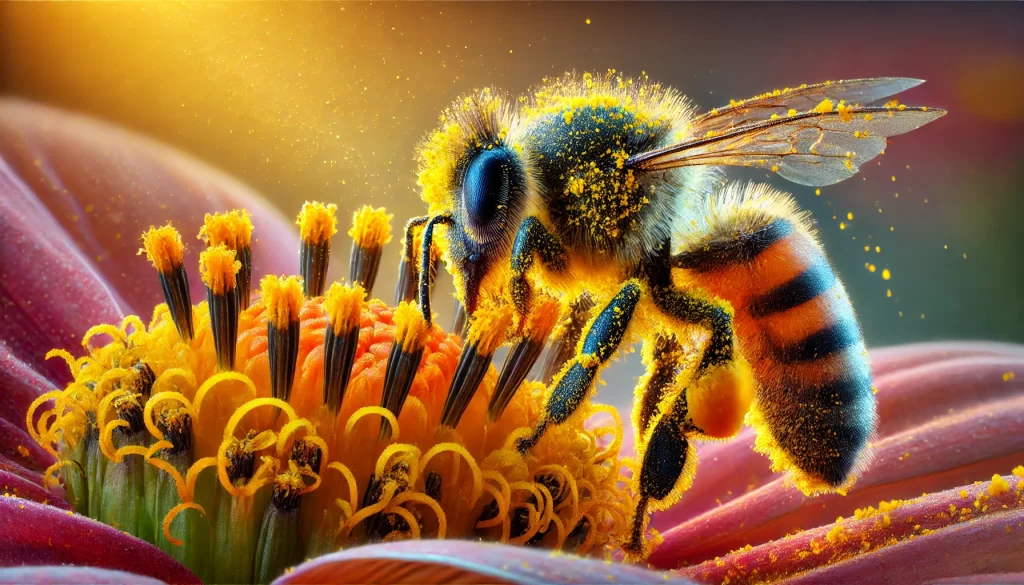
What Are Pollinating Insects?
Pollinating insects are those that, while visiting flowers in search of food, such as nectar or pollen, transfer pollen from one flower to another, facilitating fertilization and plant reproduction. This process is crucial for seed and fruit formation and is essential for the reproduction of many plants, including those that produce food for humans.
Among the most common pollinating insects are bees, butterflies, bumblebees, hoverflies, beetles, and some types of ants. These insects play a crucial role in agriculture and in the biodiversity of ecosystems.
Importance of Pollinating Insects
Pollinating insects are vital for the health of ecosystems and global agricultural production. Their importance lies in their role in pollination, a process essential for the reproduction of many plants, including those that produce food for humans.
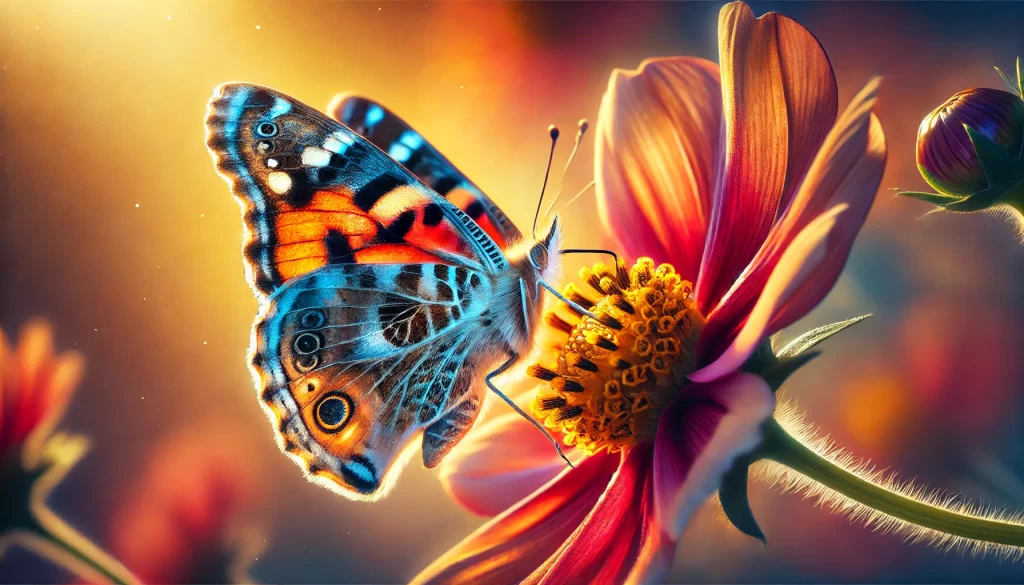
Importance in Agriculture
- Increase in Food Production: Pollinating insects, such as bees, butterflies, and bumblebees, are responsible for pollinating approximately 75% of the world’s food crops. This includes fruits, vegetables, nuts, and seeds. Without them, the quantity and quality of these products would decrease drastically.
- Improvement in Product Quality: Proper pollination not only increases crop yield but also improves quality. For example, pollinated fruits and seeds are often larger, better shaped, and more nutritious.
- Crop Diversity: Pollinating insects contribute to agricultural diversity by facilitating the reproduction of a wide variety of plants. This is crucial for food security, as greater crop diversity reduces dependence on a single type of food and increases resilience against pests and diseases.
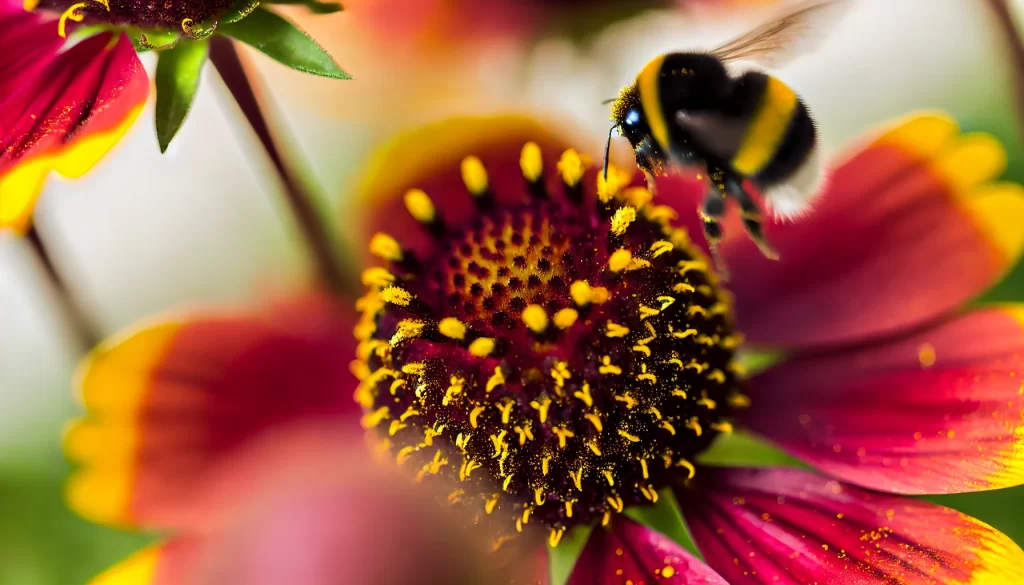
Ecological Importance
- Maintenance of Biodiversity: Pollinating insects are essential for the reproduction of many wild plants, which in turn provide food and shelter for other species. Thus, pollinators help maintain biodiversity in natural ecosystems.
- Plant Life Cycle: By facilitating plant reproduction, pollinating insects allow the continuation of the life cycle of many plant species. This is vital for the survival of ecosystems, as plants are the foundation of most food chains.
- Ecosystem Sustainability: Pollinators contribute to the stability and sustainability of ecosystems by supporting the reproduction of plants that maintain soils, regulate the climate, and provide essential resources like clean water.
Economic Impact
- Direct Economic Value: Insect pollination has significant economic value. It is estimated that natural pollination services contribute billions of dollars annually to the global economy in terms of food production.
- Reduction of Agricultural Costs: The presence of pollinating insects in agricultural fields reduces the need for artificial pollination methods, which can be costly and less efficient.
Main Pollinating Insects
Below is a list of the main pollinating insects:
Bees (Apis mellifera and solitary bees):
- Honeybee (Apis mellifera)
- Carpenter bees (Xylocopa spp.)
- Mason bees (Osmia spp.)
- Sweat bees (Halictidae)

Bumblebees (Bombus spp.):
- Common bumblebee (Bombus terrestris)
- Red-tailed bumblebee (Bombus lapidarius)
< strong>Butterflies (Lepidoptera):
- Monarch butterfly (Danaus plexippus)
- Swallowtail butterfly (Papilio machaon)
Moths (Noctuidae and Sphingidae):
- Hummingbird hawk-moth (Macroglossum stellatarum)
- Silkworm moth (Bombyx mori)
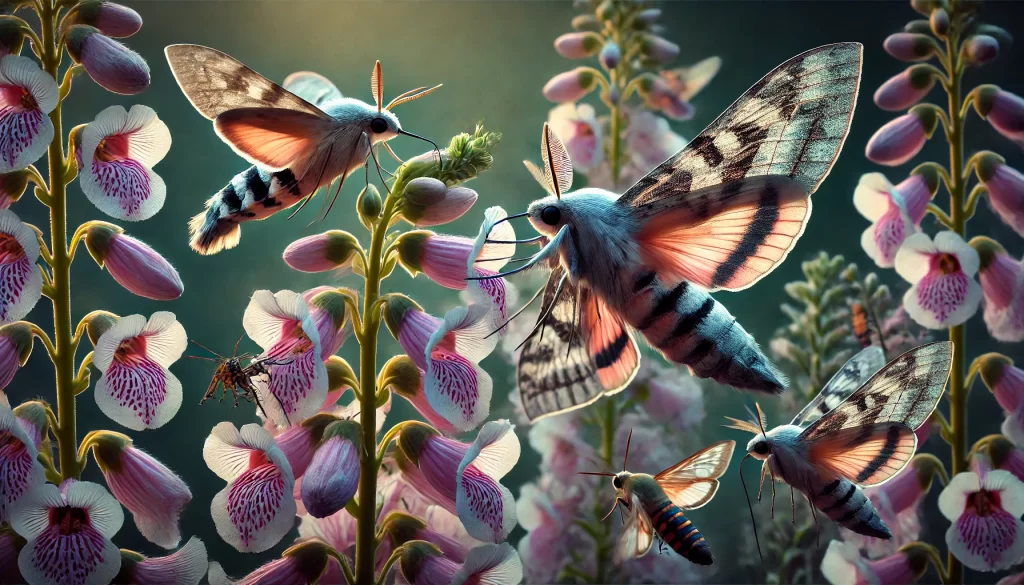
Flies (Diptera):
- Hoverflies (Syrphidae)
- Fruit flies (Drosophilidae)
Beetles (Coleoptera):
- Flower beetle (Cetoniidae)
- Soldier beetle (Cantharidae)
Ants (Formicidae):
- Argentine ant (Linepithema humile)
- Fire ant (Solenopsis invicta)
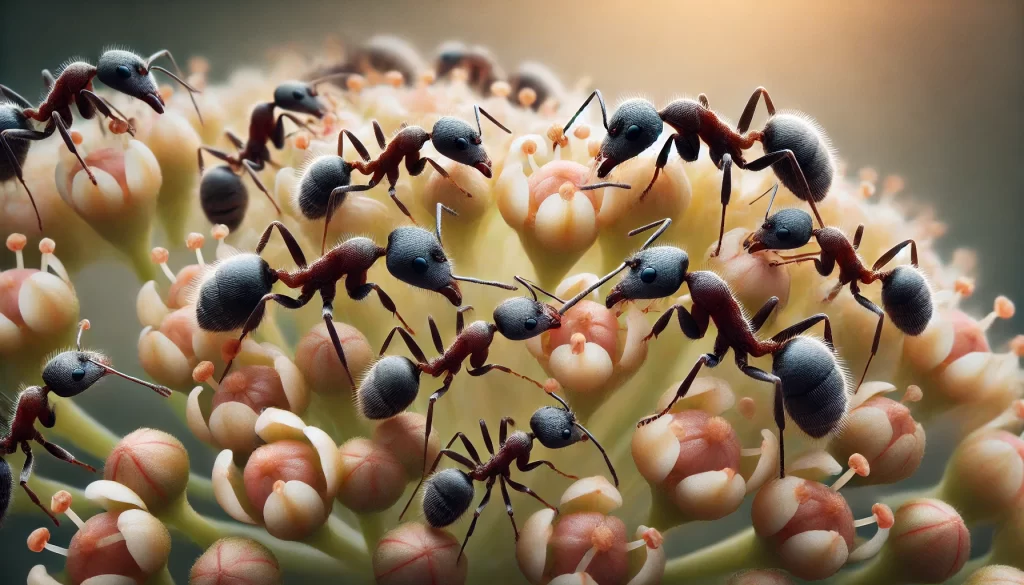
Wasps (Hymenoptera):
- Paper wasp (Polistes spp.)
- Flower wasp (Vespula spp.)
These insects play a crucial role in pollinating a wide variety of plants and crops, contributing to food production and the maintenance of biodiversity in ecosystems.
Feeding Habits of Pollinating Insects and How It Influences Pollination
The feeding habits of pollinating insects are fundamental to the pollination process, as their search for food leads them to interact with flowers and, consequently, transfer pollen from one flower to another. These habits vary among different types of pollinators and are closely linked to their anatomy, behavior, and the plants they visit.
Types of Feeding and Their Influence on Pollination
- Nectar Feeding:
- Bees: Bees are primarily attracted to nectar, a sugar-rich source that they use for energy. While collecting nectar, pollen adheres to their fuzzy bodies. Bees often visit flowers from different plants during the same trip, promoting cross-pollination, a process that enhances the genetic diversity of plants.
- Butterflies: Butterflies also feed on nectar, using their long proboscis to access it. They prefer brightly colored flowers such as red, orange, and yellow. Their feeding on different flowers helps in the dispersion of pollen.
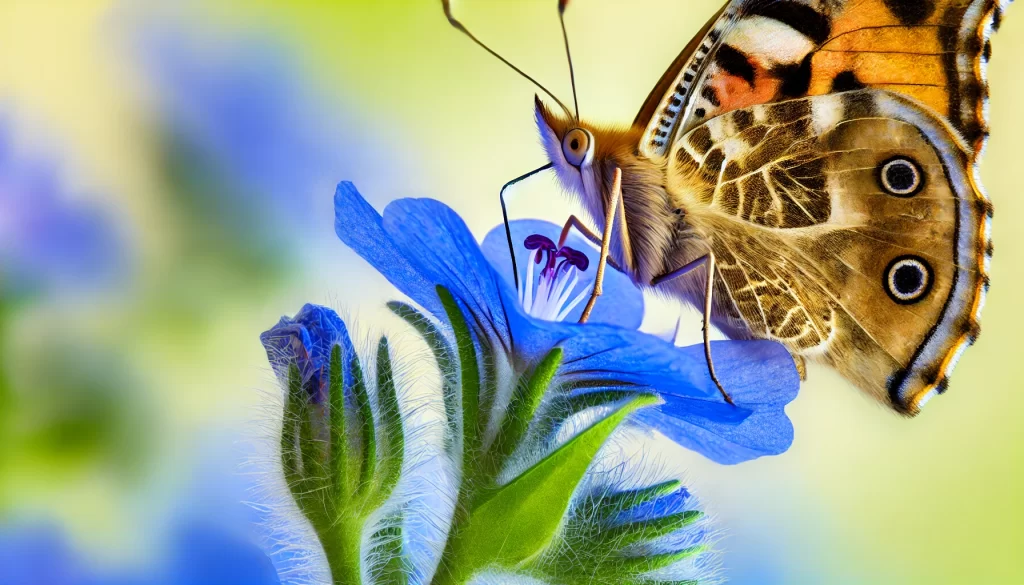
- Pollen Feeding:
- Bumblebees and Solitary Bees: In addition to nectar, some pollinators, such as bumblebees and certain solitary bees, collect pollen as a protein source. This pollen is stored in specialized structures, like pollen baskets (corbiculae) on their hind legs, and transported back to their nests to feed their offspring. During this process, pollen is transferred between flowers, facilitating pollination.
- Beetles: Some beetles, known as primitive pollinators, also feed on pollen and nectar. As their bodies are less specialized for pollen transport, they may be less efficient than bees, but they still contribute to pollination.
- Feeding on Other Floral Resources:
- Hoverflies: Hoverflies feed on both nectar and pollen. Although they are less hairy than bees, making them less efficient in pollen transfer, their large numbers and diversity make them important pollinators, especially in cooler climates where bees are less active.
- Nocturnal Moths: Many moths feed on nectar at night, visiting flowers that open or release their scent at dusk. These flowers are often white or pale and have strong aromas to attract moths. Although their activity is nocturnal, moths play a crucial role in the pollination of certain plant species.
How to Attract Pollinating Insects?
Attracting pollinating insects to your garden, orchard, or farm is essential for improving pollination and supporting biodiversity. Here are some effective strategies to attract and maintain these important insects:
1. Planting Native Flowers and Plants
- Variety of Species: Planting a wide variety of native flowers that bloom at different times of the year ensures that pollinators have a constant source of food.
- Bright Colors and Attractive Scents: Flowers with bright colors (such as blue, yellow, red) and strong scents are particularly attractive to pollinators like bees and butterflies.
- Nectar- and Pollen-Rich Plants: Species like lavender, sunflowers, marigolds, clover, and mint are excellent for attracting bees, butterflies, and other pollinators.
2. Creating Habitats
- Insect Hotels: Installing structures like solitary bee hotels or butterfly shelters provides safe nesting places.
- Bare Soil Areas: Some bees and other pollinating insects nest in the soil. Leaving areas without vegetation cover can offer them a suitable place to do so.
- Conservation of Natural Spaces: Leaving some areas of your garden uncut or without much intervention can provide natural habitats where pollinators can find refuge and reproduce.
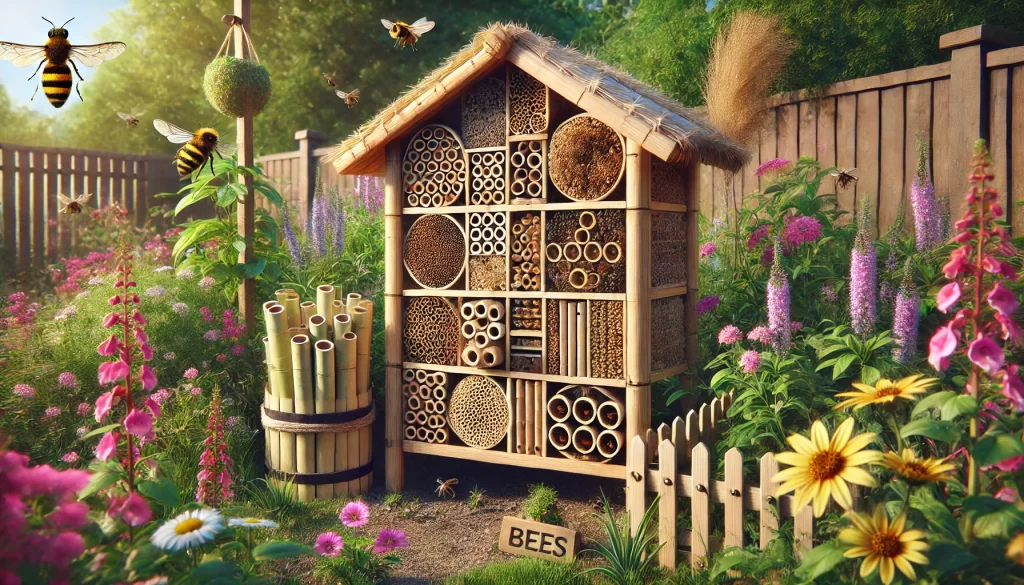
3. Eliminating or Reducing Pesticides
- Use of Organic Pesticides: Opting for organic and natural pesticides that are not harmful to pollinators is crucial.
- Application at Safe Times: If pesticides are necessary, applying them early in the morning or at dusk, when pollinators are less active, can help protect them.
4. Providing Water
- Water Sources: Providing shallow water sources or containers with stones where insects can rest and drink without risk of drowning is an excellent way to attract and keep them in your garden.
5. Promoting Plant Diversity
- Plants Attractive to Different Pollinators: Diversifying the plants in your garden to attract different types of pollinators, such as bees, butterflies, and beetles, will help ensure that your space is an attractive point for all of them.
- Cover Crops: Planting cover crops like clover or alfalfa between seasons can provide additional food sources.
6. Avoiding Monocultures
- Crop Rotation: Avoiding monocultures and practicing crop rotation can improve soil health and provide a wider range of resources for pollinators.
- Intercropping: Planting different species together or in strips can attract more pollinators and improve cross-pollination.
7. Host Plants for Butterflies
- Host Plants: Including plants that serve as food for butterfly larvae, such as milkweed for the monarch butterfly, can help attract these butterflies and support their full life cycle in your garden.
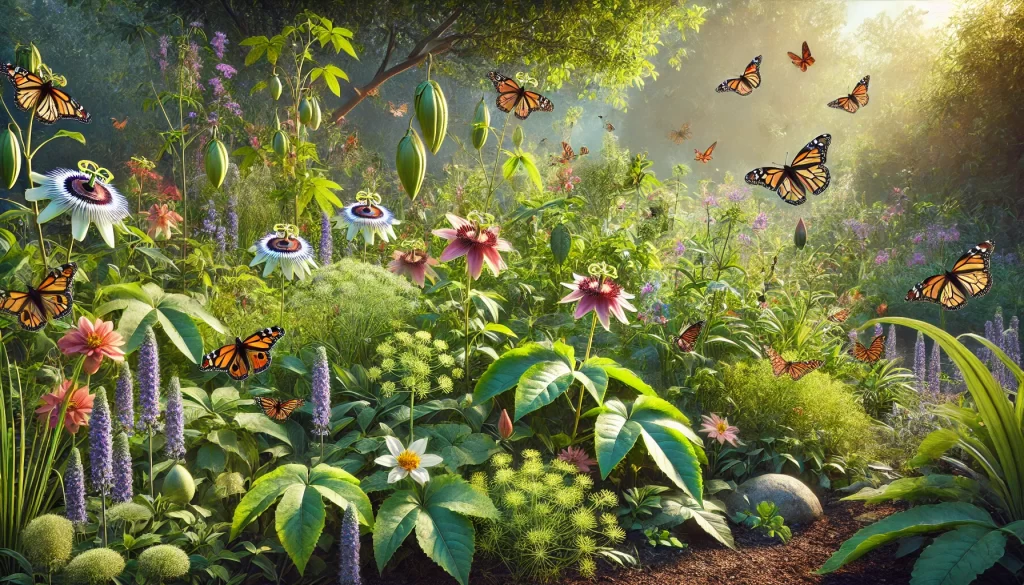
8. Creating Ecological Corridors
- Connecting Habitats: Creating corridors of flowers and plants that connect different areas of your garden or property can allow pollinators to move easily between zones, encouraging their presence and activity throughout the space.
By implementing these practices, you will not only attract a greater number and diversity of pollinating insects but also contribute to the health and sustainability of local ecosystems.
Care for Pollinating Insects
Caring for pollinating insects is crucial for biodiversity, ecosystems, and agriculture. Key practices for their protection include:
- Reduction of Pesticide Use: Use selective pesticides and apply them at safe times to avoid harming pollinators.
- Creating Habitats: Plant native species, create flower corridors, and offer shelters and nests for pollinators.
- Agricultural Diversification: Implement crop rotation and add hedgerows and trees in agricultural landscapes.
- Education and Awareness: Promote awareness of the importance of pollinators and support community initiatives.
- Conservation Policies: Advocate for protective regulations and support research and monitoring.
- Sustainable Agricultural Practices: Encourage sustainable beekeeping and natural pollination.
- Climate Change Mitigation: Adapt agricultural practices to help pollinators cope with climate changes.
- Promoting Biodiversity: Protect endangered species and support the genetic diversity of pollinators.
These actions are essential to ensure the survival of pollinating insects and their role in the ecosystem.
 AgronoBlog – Agriculture Blog
AgronoBlog – Agriculture Blog 